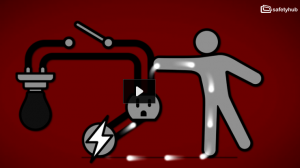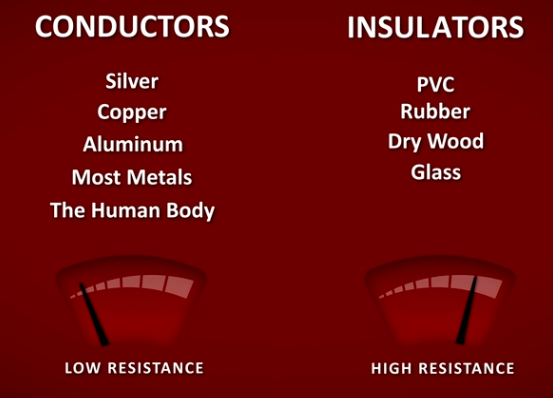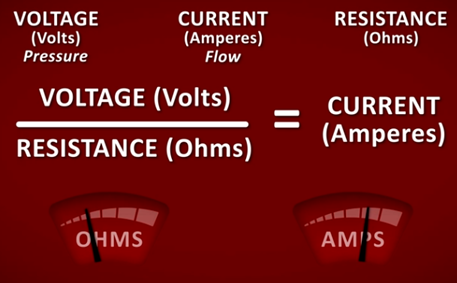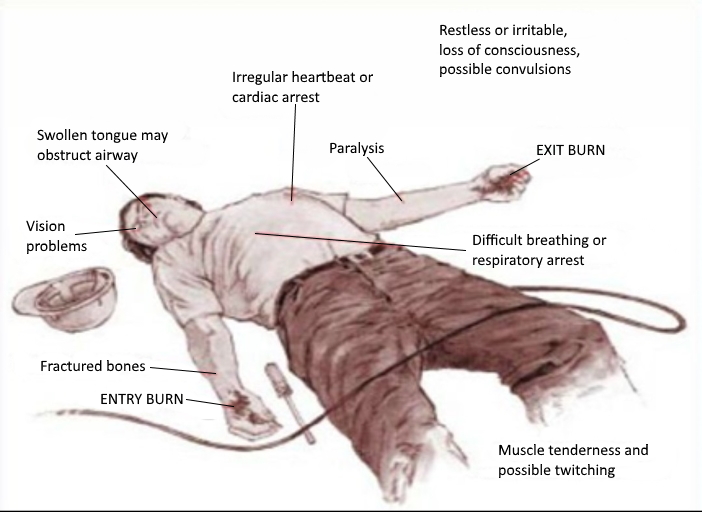Most workplaces are literally surrounded by a maze of electrical circuits. Cables, conduits and extension cords deliver electricity to plant, equipment appliances and lights.
Electricity is a convenient, cost effective and surprisingly safe source of energy in every workplace. We should however not become complacent about the potential hazards associated with electricity. Even though there are relatively few accidents associated with electricity, many of the accidents that do happen have serious or devastating results.
The Three Basic Rules That Apply to Electricity
Rule #1 – Electricity will only travel in a circuit (continuous path from its source to the appliance or piece of equipment and back to its source via a different path).



Rule #2 – Electricity will always travel in the path of least resistance.
Rule #3 – Electricity will always try to travel to the ground.
Basic facts – definitions and explanations of basic electrical terms.


Voltage analogy is similar to water in a hose with the nozzle turned off, we have water pressure but no movement. A good analogy of current is like the flow of water through a hose.

We can measure the flow of electricity or current using Amperes.
Effects of Electrical Current on the Human Body
Electric current is able to create severe burns in the body. The reason is hidden in the power dissipation across the body’s electrical resistance.
The contact with electric current can have various effects on the human body such as pain, burns or even death. There are many factors which effect the way the body interacts with current, such as skin resistance, the voltage, the length of time of contact, the amount of electric current and its intensity.
The body is extremely sensitive to the effects of electric current, that’s why this scenario can lead to a variety of outcomes. The real measure of electrocution intensity is directly related to the amount of current (Ohms law), in amperes, that passes through the body depending on the body resistance, wet (500Ω) or dry (1000Ω) and point of contacts we have very different effects for the same current.
Contact with an electrical current disrupts normal operation of our nervous and muscular systems, and when this current passes through your body, it is transformed into thermal energy. This can cause serious burns, both inside your body and on your skin.
The longer the current continues to pass through you, the worse it gets. More heat is generated and the damage to your body increases, so the inability to let go can cause some serious problems.
Effects of Electrical Current Contact for 1 Second (Electrocution or Electric Shock)
Below 1 mA – Not perceptible
1 mA – Threshold of feeling, tingling
5 mA – Slight shock. Not painful. Average individual can let go. Involuntary reaction can lead to indirect injuries.
6-25 mA (women) – Painful shocks. Loss of muscle control.
6-30 mA (men) – Freezing current, “can’t let go”. The person may be thrown away from the power source. Individual cannot let go. Strong involuntary reaction can lead to involuntary injuries.
50 to 150 mA – Extreme pain. Respiratory arrest. Muscle reactions. Possible death. Currents above 100 mA are almost always fatal unless immediate medical attention is provided.
1-4.3 A – Fibrillation of the heart. Muscle contraction and nerve damage occur. Likely death.
10 A – Cardiac arrest, severe burns. Death is probable. (most common size for circuit breakers for switches and outlets)
Cardiac effects are among the most serious and among the most common electrical injuries. The heart is more commonly affected because the electric current usually follows the path of least resistance in the body along blood vessels and nerves, directing the current towards the heart.

Sources: Physiological effect of electric current. WikiLectures.eu, Safetyhub Electrical Safety Short.
